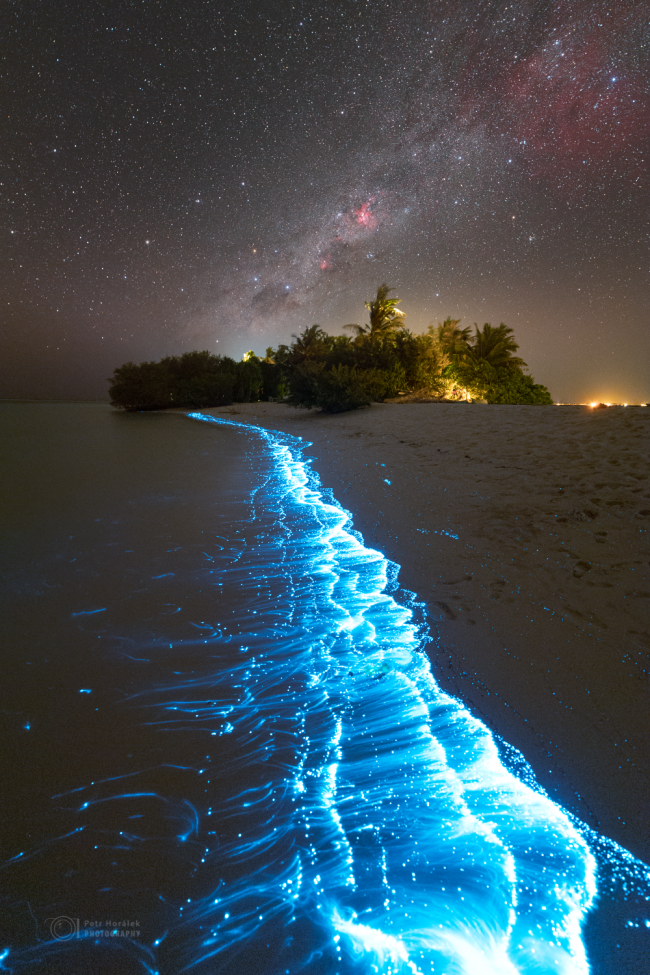
What is bioluminescence? It’s a living light

What is bioluminescence?
When you hear the word bioluminescence, do you think of glowing ocean waves under a dark sky? Many do. But, bioluminescence includes all life that – through a chemical reaction – emits light. In the image above, a single-celled form of marine plankton, known as bioluminescent dinoflagellates, are the source of the light on the incoming waves. But in addition, there are bioluminescent creatures in the deeper ocean, too. And we here on Earth’s dry land sometimes see bioluminescent creatures flying in the air.
First, about the image above, which is from the Maldives, an island nation in the Indian Ocean, southwest of Sri Lanka and India. According to the Visit Maldives website:
These dinoflagellates use a chemical called luciferin to emit a bright blue light as a defense mechanism … The flashes of light produced by the dinoflagellates can disorient and confuse predators.
The movement of the waves can also trigger this light emission, resulting in the mesmerizing sight of glowing waves washing ashore in the Maldives.
Last chance to get a moon phase calendar! Only a few left. On sale now.
How do living creatures make light?
Luciferin is the key to these creatures that emit living light. Luciferin is a molecule that reacts in the presence of the enzyme luciferase to produce light. Indeed, the words come from lucifer, which is simply Latin for light-bearer.
The chemical reaction between the two splits off a molecular fragment. That, in turn, produces an excited state that emits light.
In the video below, you can see how scientists are studying undersea creatures to learn more about bioluminescence.
Other sources of bioluminescence
Bioluminescence is common in marine life, such as jellyfish, sharks, crustaceans and fish. However, it can occur on land too, in worms, fireflies and even plant life such as mushrooms. In fact, here’s a list of 10 mushrooms that glow in the dark.

Bottom line: Bioluminescence is living light. From plankton to jellyfish to fireflies, many creatures around the world can glow in the dark.







































